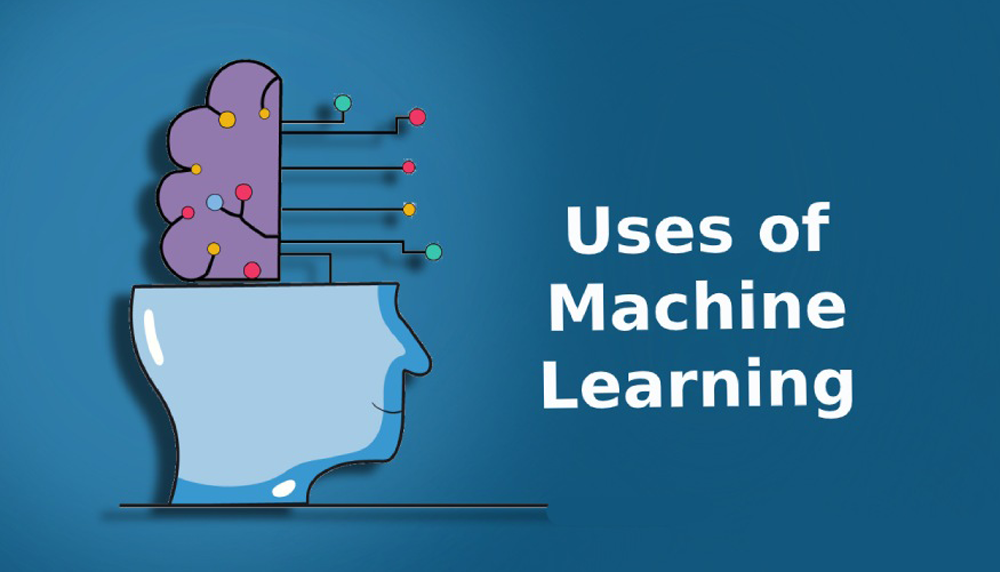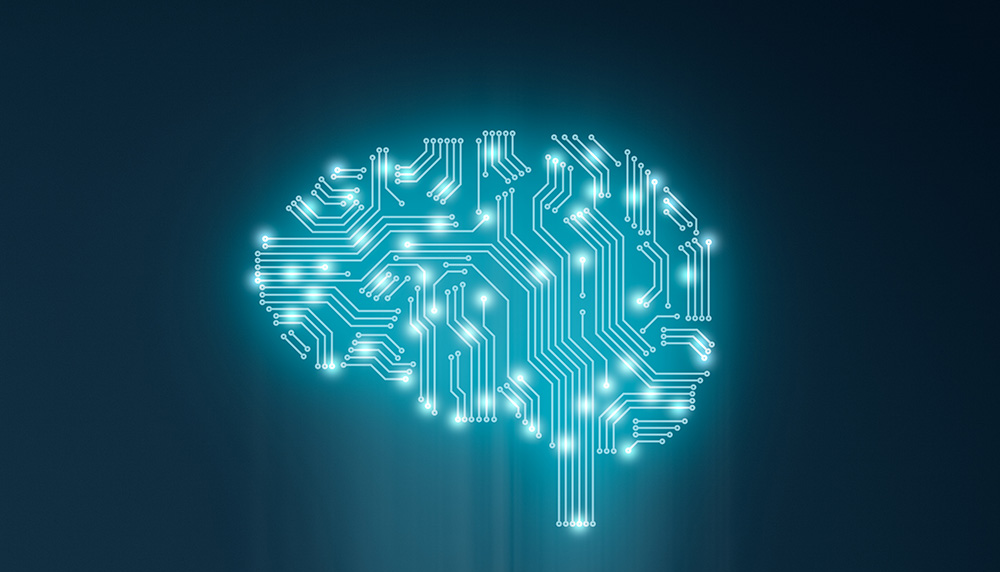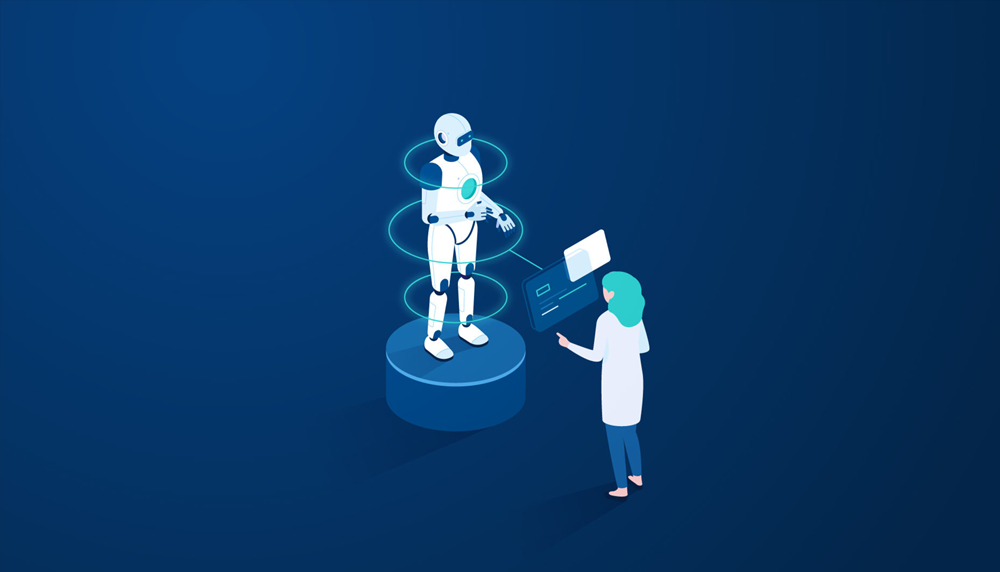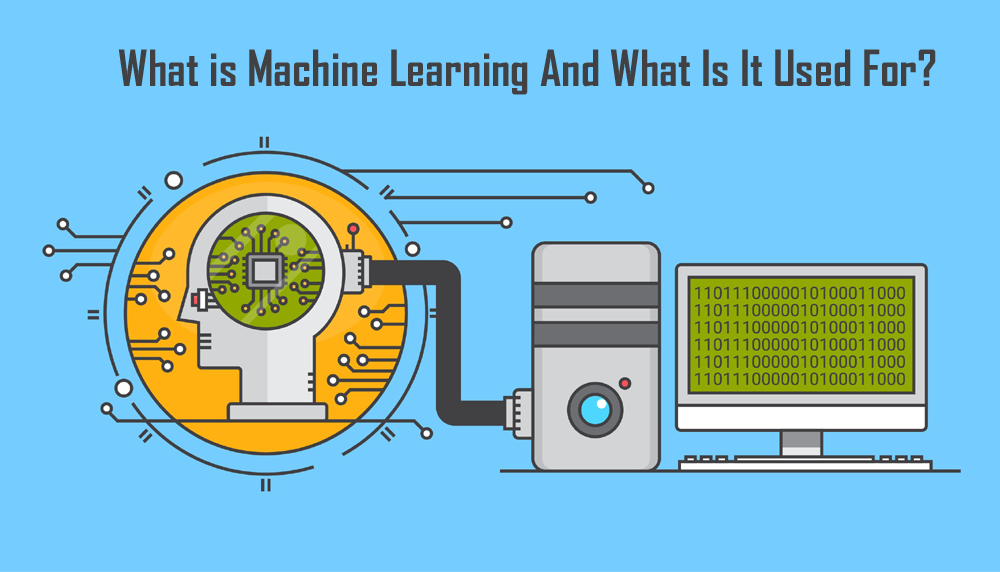You may not even be aware, but you have been enjoying the profound benefits of machine learning for several years. But what is machine learning? you ask. This is a term that has become somewhat increasingly common even though many people still don’t know what it is or the use of machine learning in a business.
But the truth is that many of us will find it incredibly hard or challenging to go through an entire day without using at least one web service or app that is driven powerfully by this. Only a handful of individuals who are tech-savvy know and fully understand the role of this datasets and algorithms in data science.
In this post, the answer to the question, ‘what is machine learning?’ will be supplied as well as the use of machine learning in a business.
What is machine learning?
Machine learning can be referred to as the core sub-area of AI (Artificial Intelligence). This applications learn from data or experience like humans without any direct programming.
When exposed to very new data, these applications learn, begin to grow, change, and eventually develop all by themselves. Put differently; computers find much more insightful information – with machine learning – without being told precisely where to look. Instead, computers do this by heavily leveraging algorithms that learn from data in a highly interactive process.
Although the concept of this language has been around for as long as the era of World War II – think of the Enigma Machine – the ability to automate applications of complex mathematical calculations to Big Data has been progressively gaining momentum over the past few years.

At a much higher level, Machine level is the fundamental ability to adapt favorably to new data via iterations. On a basic level, applications learn from every previous computation as well as transactions and also use what is known as ‘pattern recognition’ to produce informed and reliable results.
Now that you understand a bit about machine learning, let’s proceed to learn how it works.
How does machine learning work?
Machine learning has undoubtedly become one of the most electrifying entities of artificial intelligence. It duly completes the task of learning from reliable data with particular inputs to the machine.
However, it is vitally important to understand precisely what makes machine learning work as well as how anyone can make use of machine learning in a business.
The machine learning process begins with inputting quality training data into the selected algorithm. Training data refers to known – or unknown – data used to develop the final machine learning algorithm.
To check whether the algorithm works perfectly and correctly, new input data is fed right into the machine learning algorithm. The prediction, as well as results, will then be checked.
If the prediction is not what is expected, the algorithm is re-trained several times until the desired output is discovered. This enables the machine learning algorithm to learn on its own at every point and also generate the most optimal answer that will finally increase in accuracy over time.
Types of machine learning
Machine learning is somewhat complicated in itself, and that is why it has been divided into two major areas: supervised learning and unsupervised learning.
Each of these areas come with a specific purpose as well as an action within machine learning. Each yields different, specific results and also utilize numerous forms of data.
About 70 percent of languages is supervised learning, while unsupervised learning ranges from 10-12 percent. Another method of machine learning – which is often less used – is reinforcement learning.

Semi-supervised learning is also not too popular. But it will be touched on briefly.
Let’s take a look at each type of machine learning:
Supervises learning
In this type of machine learning, labeled or known data is used for the training data. Since the information is already known, the learning is consequently supervised or directed into successful execution.
The input data run through this algorithms and is generally used to train the model. As soon as the model is fully trained, based on the known data, you can then input unknown data into the model and get new responses.
The top algorithms that are currently used for supervised learning include:
- Linear regression
- Polynomial regression
- Logistic regression
- K-nearest neighbors
- Decision trees
- Random forest
- Native Bayes
Let’s check on the next aspect of machine learning: unsupervised learning.
Unsupervised learning
Here, the training data is unlabeled and unknown; this means that no one has ever looked at the data before now. Without this aspect of known data, the input cannot be fully guided into the algorithm. This is where the unsupervised term originates from.
The data is fed into the machine algorithm and is then used to train the model. The trained model does its best to search for the data and then gives the desired response.
In this particular case, it is much like the algorithm is doing its best to break code like the Enigma Machine, but without the involvement of the human mind but a machine.
The top algorithms currently used for unsupervised learning include:
- Fuzzy means
- Apriori
- Partial least squares
- K-means clustering
- Singular value decomposition
- Principal component analysis
- Hierarchical clustering
Semi-supervised learning
The dataset contains both unstructured and structured data which guides the algorithms on their way to making independent conclusions.
The combination of these types of data in one training dataset allows machine learning algorithms to learn or discover unlabeled data.
Reinforcement learning
Like conventional types of data analysis, the algorithm conceives data via a process of trial and error. It then decides which particular action will result in much higher rewards.
Three main components constitute reinforcement learning: the agent, the environment as well as the actions. The agent refers to the decision-maker or learner. The environment includes every other thing that the agent interacts with while the actions are precisely what the agent does.
Reinforcement learning comes about when the agent chooses actions that increase the expected reward over a specific period. This is easiest to achieve, especially when the agent is working within sound policy frameworks.
Why machine learning is important in today’s world
Machine learning, as well as data mining – which is a component of this – are vital tools in the process of gleaning insights from massive datasets held by researchers and companies today.
There are two primary reasons for this:
- The scale of data: Organizations are continually faced with varieties of data and massive volumes that need to be heavily processed. Processing power is readily available and much more efficient.
Models that can easily be programmed to process data in an independent and unassisted manner, determine conclusions as well as identify patterns are priceless.
- Unexpected findings: Since machine learning algorithms update without external control, the analytical accuracy significantly improves with each run as it continually teaches itself from the datasets it analyzes.
The iterative nature of learning is valuable and unique since it occurs without any human intervention. This provides the ability to unveil hidden insights without particularly programmed to do so.

Who uses machine learning?
Companies leverage algorithms to sort through data and also optimize business operations, though this is not something new.
Leveraging algorithms extends beyond digital marketing models such as apps or web services. It also extends to any industry or organization where data is garnered, and this includes the following:
- Financial services
- Healthcare
- Marketing and sales
- Oil and gas
- Government
- Transportation
- Brick-and-mortar retail
Amazon, Facebook, Google, and Netflix have been using machine algorithms to drive recommendations, searches, targeted advertising, and even more for more than a decade.
Uber Eats, for instance, shared in a GeekWire piece that the organization uses machine learning and data mining to estimate delivery times.
Use of machine learning in a business
Businesses will always benefit from applications that can help gather, organize, interpret, as well as use substantial amounts of data.
According to the Harvard Business Review, machine learning – which will facilitate the finding of patterns as well as automate value extraction in several areas – will build upon the business intelligence revolution of the past few years.
Data will progressively drive a real-time economy where resources are heavily marshaled even more efficiently. And the production of both goods and services become available when requested with much lower failure rates as well as better predictability.
In the next few paragraphs, you will discover the use of machine learning in a business:
Analyzing sales data
Sales functions have benefited from the significant growth in sales-focused data, thanks to the overall increase in digital interaction. Sales teams can now tap into metrics obtained from social media platforms, website visits, and A/B testing.
Nevertheless, despite the availability of so much data that sales teams need to sift through, they are usually bogged down by the time and analysis it takes to identify the necessary insights.
Thanks to machine learning, the latter can speed up the entire process of uncovering even the most valuable data or information. Learning languages does most of the heavy lifting, especially in the time-consuming process of reviewing all sales data. It can also assist you with most of the analysis that a sales team needs to carry out.

Detecting suspicious activities and fraud
According to research, the average organization loses up to 5 percent of its revenue to fraud every year. This is where machine learning and artificial intelligence can assist you in minimizing these figures.
Machine learning can assist you in building models based on historical transactions, social network information, machine as well as other data to develop patterns which could help in timely detection of outliers, anomalies, and exceptions.
For example, banks use historical data to build algorithms based primarily on previous fraud activities. This means that whenever related fraudulent activities are repeated, the algorithms would help in identifying fraudulent behavior.
PayPal has been doing precisely this for more than 10 years now. The organization handles up to $10,000 every second and have generated up to 4.9 billion payments in 2015 across approximately 202 countries.
This explains the severe risk PayPal is prone to each second. What many users of the leading payment processor don’t know is that PayPal, along with its mathematicians and data scientists, makes use of a homegrown artificial intelligence engine to combat any fraud activity.
Product recommendations
Every customer that patronizes online retail businesses loves personalized recommendations that are delivered to them. This is because it significantly improves their shopping experiences and also offers a way to sell even more products.
Although Amazon was the first platform to introduce algorithms to boost product recommendation processes, machine learning tools have significantly ramped up what eCommerce owners can do.
This shows you that eCommerce giants like Alibaba, Amazon, etc. have jumped on the machine-learning bandwagon. Alibaba created what is known as the ‘E-commerce Brain,’ the product recommendation mechanism powered by machine learning. This has helped the retailer to considerably raise revenues simply by populating billions of personalized product recommendation pages.
Career planning
Machine learning can also assist in proper guidance and recommends employees in choosing career paths which would eventually lead to increased retention, satisfaction, and performance.
Natural language processing (NLP)
There are several functions where having a stand-in to take care of tedious or boring tasks would be great. These include customer service, tech support, help desks, etc.
Thanks to the capability of machine learning’s NLP (natural language processing), computers can now take over. This is because natural language processing offers automated translation methods between human and computer languages.
Machine learning focuses primarily on word choices, slang, context, jargon, meaning as well as other vague and indistinct nuances in human languages. This makes it even more human in its responses.

It is this capability that chatbots leverage and serve as communicators in place of humans in multiple roles. Natural language processing also applies to situations where there is a need to dissect complex information, including research reports and contracts.
Drone management
Machine learning can contribute to the timely inspection of commercial edifices or structures using drones. Drones can easily click images which can then be analyzed for any degradation or cracks.
By now, you have the answer to the questions: what is machine learning? And you already have an inkling of the use of this in a business.
Machine learning algorithms are currently used globally in nearly every major sector. And this includes business, finance, transportation, agriculture, government, marketing, and cybersecurity.
The rapid adoption of machine language across disparate industries speaks of the value of data science in general – and machine learning in particular – creates.
Fully armed with vast insights from massive datasets – which generally occur in real-time – companies can operate much more efficiently and end up gaining a competitive edge.





Hello i am kavin, its my first time to commenting anywhere,
when i read this post i thought i could also make comment due
to this sensible article.
My web site :: jpeg